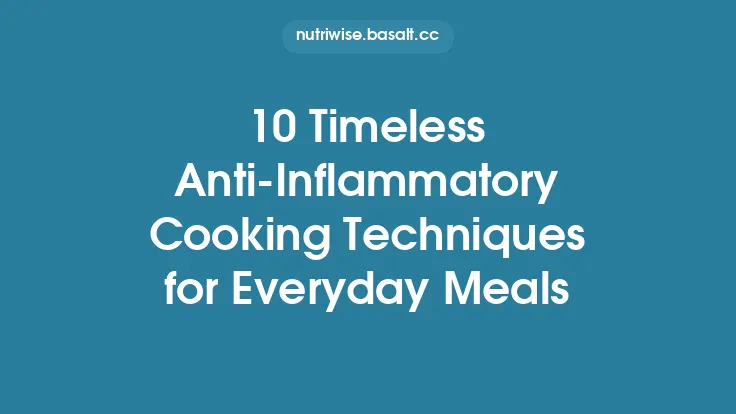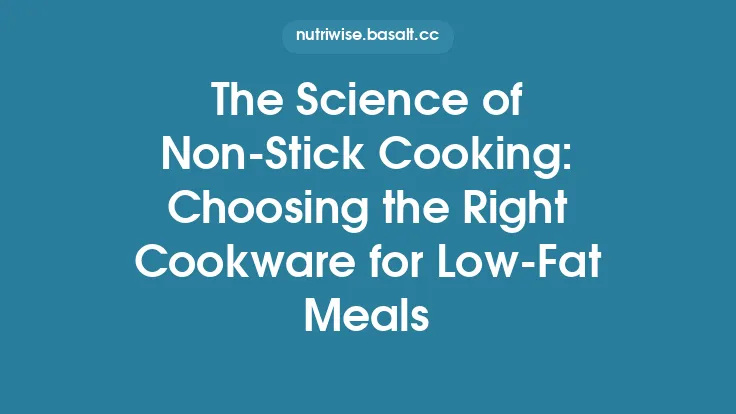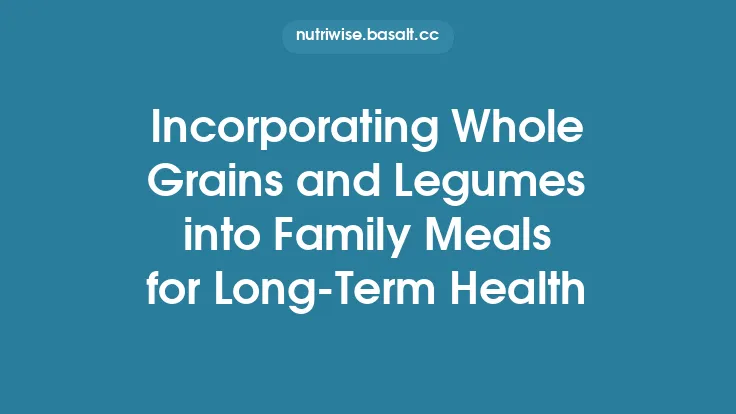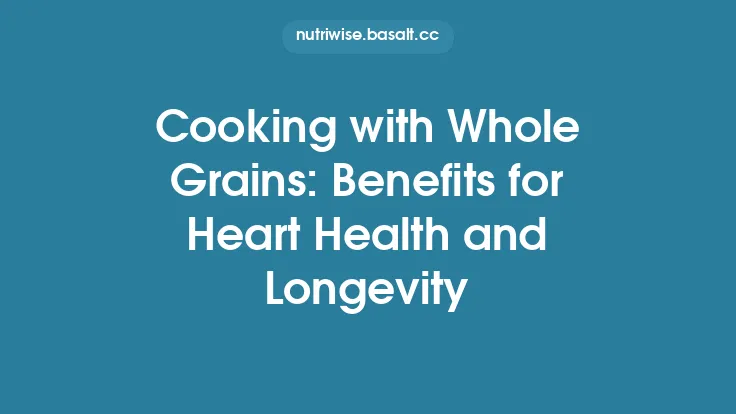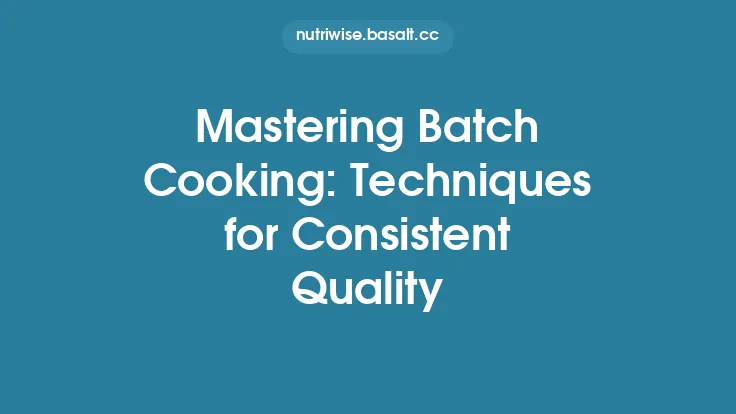Steaming, grilling, baking, poaching, sautéing, stir‑frying, pressure cooking, slow cooking, sous‑vide, and microwaving are the foundational techniques that have stood the test of time for creating meals that support cardiovascular health. By focusing on how heat, moisture, and time interact with food, these methods naturally limit the formation of harmful compounds, preserve the integrity of essential nutrients, and keep meals satisfying without relying on heavy sauces or excessive added fats. Below, each technique is explored in depth, with practical guidance for everyday home cooking.
1. Steaming – Gentle Heat, Maximum Nutrient Retention
Why it works for the heart
Steam transfers heat through water vapor, cooking food at temperatures just below boiling (100 °C/212 °F). Because the food never contacts water directly, water‑soluble vitamins (B‑complex, vitamin C) and heat‑sensitive phytochemicals remain largely intact. The method also eliminates the need for added cooking fats, keeping the overall energy density low.
Key technical points
| Aspect | Detail |
|---|---|
| Temperature range | 95–100 °C (203–212 °F) |
| Cooking time | Varies by size and density; e.g., broccoli florets 4–6 min, fish fillets 6–8 min |
| Equipment | Steamer basket, electric steamer, or a pot with a fitted lid and a perforated insert |
Practical tips
- Layer wisely: Place denser items (carrots, potatoes) on the bottom tier and quicker‑cooking vegetables (asparagus, peas) on top to achieve uniform doneness.
- Avoid over‑steaming: Use a timer and test with a fork; over‑cooking can degrade texture and cause nutrient leaching into the steam.
- Add aromatics to the water: A slice of ginger or a few citrus peels can infuse subtle flavor without extra sodium or fat.
2. Grilling and Broiling – High Heat, Fat Drip‑Away
Why it works for the heart
Both grilling (direct heat from below) and broiling (direct heat from above) expose food to intense, dry heat, creating a flavorful Maillard reaction while allowing excess fat to melt and drip away from the food. This reduces the final fat content compared with pan‑frying.
Key technical points
| Aspect | Detail |
|---|---|
| Ideal temperature | 200–260 °C (392–500 °F) for quick searing; 150–180 °C (302–356 °F) for slower cooking |
| Pre‑heat time | Minimum 10 min for charcoal; 5 min for gas or electric grills |
| Safety | Keep a drip pan beneath the grill to catch melted fat and prevent flare‑ups |
Practical tips
- Trim visible fat before cooking to minimize drippings.
- Use a two‑zone setup: One side hot for searing, the other cooler for finishing, which prevents over‑cooking and reduces the formation of heterocyclic amines (HCAs).
- Rotate and flip foods every 2–3 min to ensure even browning and avoid charring, which can produce potentially harmful compounds.
3. Baking and Roasting – Even, Controlled Heat
Why it works for the heart
Baking (enclosed heat) and roasting (higher heat, often with a dry environment) allow foods to cook through convection, preserving moisture while requiring little to no added fat. The dry heat also concentrates natural flavors, reducing the temptation to add heavy sauces.
Key technical points
| Aspect | Detail |
|---|---|
| Temperature range | 160–220 °C (320–428 °F) depending on the food |
| Convection vs. conventional | Convection ovens circulate air, reducing cooking time by ~25 % and promoting uniform browning |
| Cooking vessels | Use light‑colored, non‑reactive pans (ceramic, glass) to avoid excessive heat absorption |
Practical tips
- Pre‑roast vegetables on a single layer to ensure each piece receives adequate airflow, resulting in crisp edges without the need for excess oil.
- Cover delicate proteins (e.g., fish) with parchment or foil for the first half of cooking to retain moisture, then uncover to finish browning.
- Utilize the “low‑and‑slow” method for tougher cuts (e.g., pork shoulder) at 150 °C (302 °F) to break down connective tissue without adding fat.
4. Poaching – Sub‑Boiling for Tender, Moist Results
Why it works for the heart
Poaching involves cooking food gently in a liquid kept just below boiling (80–90 °C / 176–194 °F). The low temperature prevents protein tightening, yielding tender textures while preserving delicate nutrients that might be lost at higher heat.
Key technical points
| Aspect | Detail |
|---|---|
| Liquid options | Water, low‑fat broth, or a mixture of water and a splash of wine |
| Temperature control | Use a thermometer; the surface should show small bubbles, not a rolling boil |
| Cooking time | Typically 5–10 min for fish, 15–20 min for chicken breasts |
Practical tips
- Add aromatics to the poaching liquid (e.g., bay leaf, peppercorns) for flavor without extra fat.
- Monitor temperature closely; a sudden boil can cause the protein to become tough.
- Reuse the poaching liquid as a base for soups or sauces, extending its nutritional value.
5. Sautéing with Non‑Stick or Minimal Oil – Quick, Flavorful, Light
Why it works for the heart
Sautéing uses a small amount of oil to quickly sear food over medium‑high heat. By employing a high‑quality non‑stick surface, the required oil can be reduced dramatically, limiting added calories while still achieving a desirable caramelized exterior.
Key technical points
| Aspect | Detail |
|---|---|
| Heat level | Medium‑high (≈180 °C / 356 °F) – hot enough to sizzle but not smoke |
| Oil quantity | ½–1 tsp (≈2–5 ml) for a standard 10‑inch pan |
| Timing | 2–4 min per side for thin cuts; longer for thicker pieces |
Practical tips
- Pre‑heat the pan before adding oil; this reduces the amount needed for a non‑stick surface.
- Dry ingredients (e.g., pat chicken dry) to prevent excess splatter and ensure a proper sear.
- Deglaze with a splash of liquid (water, broth) after searing to lift browned bits, creating a light sauce without heavy cream or butter.
6. Stir‑Frying with Broth or Water – High‑Heat, Low‑Fat Technique
Why it works for the heart
Traditional stir‑frying often relies on oil, but a “wet” stir‑fry substitutes a thin layer of broth or water for the oil, delivering the same rapid cooking and texture while keeping the dish lean. The high heat seals in moisture, preserving crispness and nutrient content.
Key technical points
| Aspect | Detail |
|---|---|
| Pan type | Wok or wide, heavy skillet for optimal heat distribution |
| Temperature | Very high (≈230 °C / 446 °F) – the pan should be smoking before adding liquid |
| Liquid amount | 2–4 Tbsp (30–60 ml) per batch, added gradually to prevent steaming |
Practical tips
- Pre‑heat the wok until a drop of water evaporates instantly.
- Add ingredients in order of density (hard vegetables first, leafy greens last) to ensure even cooking.
- Finish with a quick splash of citrus juice for brightness without added sodium or fat.
7. Pressure Cooking – Speedy Nutrient Preservation
Why it works for the heart
Pressure cookers raise the boiling point of water to 120–130 °C (248–266 °F) by trapping steam, dramatically reducing cooking times. Shorter exposure to heat limits nutrient loss, especially for water‑soluble vitamins, while also reducing the need for added fats to keep foods moist.
Key technical points
| Aspect | Detail |
|---|---|
| Pressure level | 0.7–0.9 bar (≈10–13 psi) for most home models |
| Cooking time | 5–15 min for legumes, 10–20 min for root vegetables |
| Release method | Quick release for delicate foods; natural release for tougher cuts |
Practical tips
- Use the minimum amount of liquid required for the cooker (usually 1‑cup/240 ml) to avoid diluting flavors.
- Avoid over‑filling; leave at least 2‑inch (5 cm) headspace to ensure proper pressure buildup.
- Season after cooking to preserve flavor integrity and avoid the need for excessive salt.
8. Slow Cooking (Crockpot) – Low‑Heat, Moist Cooking
Why it works for the heart
Slow cookers operate at low temperatures (80–95 °C / 176–203 °F) for extended periods, allowing connective tissue to break down without the need for added fats. The gentle, moist environment preserves delicate nutrients and yields tender, flavorful dishes.
Key technical points
| Aspect | Detail |
|---|---|
| Temperature range | Low: 80 °C (176 °F); High: 95 °C (203 °F) |
| Cooking duration | 4–8 hours on low; 2–4 hours on high |
| Vessel material | Ceramic or stoneware inserts retain heat evenly |
Practical tips
- Layer ingredients correctly: Place denser items (root vegetables) at the bottom where heat is greatest.
- Avoid lifting the lid frequently; each opening can add 15 min to cooking time.
- Finish with a brief sauté of aromatics (onion, garlic) before adding to the pot for added depth without extra fat.
9. Sous‑Vide – Precise Temperature, No Need for Excess Fat
Why it works for the heart
Sous‑vide involves sealing food in a vacuum bag and immersing it in a water bath held at a constant, low temperature (55–65 °C / 131–149 °F for most proteins). This method cooks food evenly from edge to center, eliminating the need for high‑heat searing or added fats to achieve tenderness.
Key technical points
| Aspect | Detail |
|---|---|
| Temperature accuracy | ±0.1 °C (±0.2 °F) with modern circulators |
| Cooking time | 1–4 hours for fish; 2–6 hours for poultry; up to 24 hours for tougher cuts |
| Bag material | Food‑grade, BPA‑free polyethylene‑nylon (PA/PE) bags |
Practical tips
- Season lightly before sealing; the vacuum environment intensifies flavors, reducing the need for heavy sauces.
- Finish with a quick sear (30 sec per side) in a hot pan to develop a crust, using minimal oil.
- Batch‑cook: Multiple portions can be cooked simultaneously, saving time and energy.
10. Microwaving – Rapid, Nutrient‑Friendly Cooking
Why it works for the heart
Microwave ovens heat food by causing water molecules to vibrate, generating heat from within. The short cooking times and minimal water usage preserve heat‑sensitive nutrients, while the lack of external heating surfaces eliminates the need for added fats.
Key technical points
| Aspect | Detail |
|---|---|
| Power levels | 600–1000 W typical; adjust based on food density |
| Cooking time | 2–5 min for most vegetables; 4–8 min for lean proteins |
| Container | Microwave‑safe glass or ceramic; avoid plastic that can leach chemicals |
Practical tips
- Cover dishes loosely (e.g., vented lid) to trap steam, ensuring even cooking and preventing moisture loss.
- Stir or rotate halfway through the cycle to avoid cold spots.
- Use a “splash” of liquid (water, broth) for foods that tend to dry out, such as chicken breasts, to maintain juiciness without added fat.
Integrating the Techniques into Daily Life
By rotating these ten timeless methods, home cooks can create a diverse menu that consistently supports cardiovascular health. Each technique offers a distinct set of advantages—whether it’s the nutrient‑preserving power of steaming, the flavor‑building potential of grilling, or the convenience of pressure cooking. When combined with mindful ingredient choices, these methods form a robust foundation for everyday meals that are both delicious and heart‑friendly.
